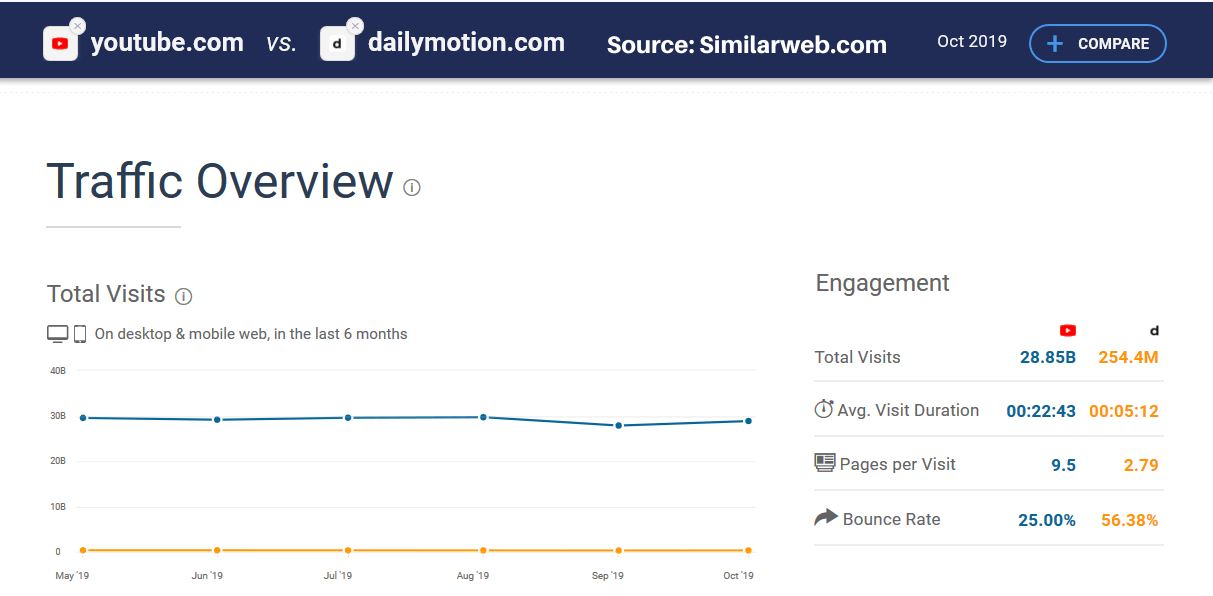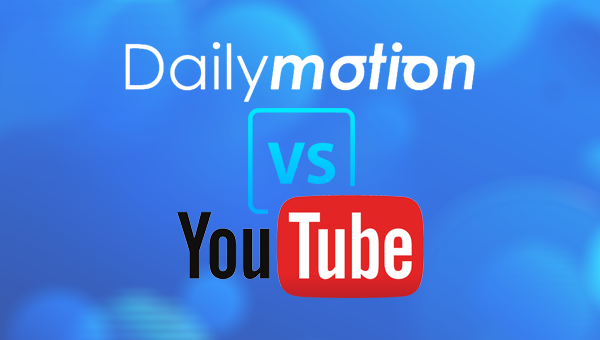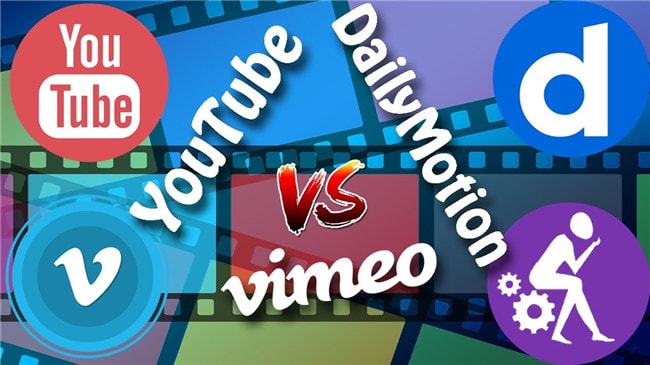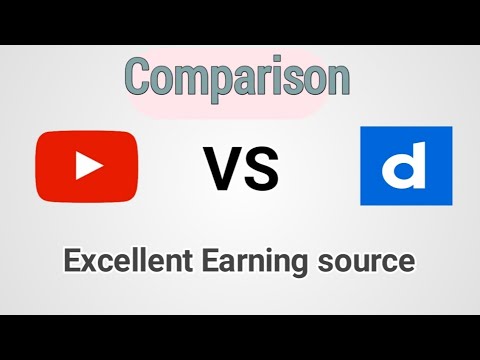Introduction to Video Platforms

In today's digital age, video platforms have revolutionized how we consume content. From tutorials to vlogs and music videos, platforms like YouTube and Dailymotion offer a treasure trove of entertainment and information. While YouTube is often the go-to for many, Dailymotion deserves a closer look. Let’s dive into the features that set these platforms apart and help you decide which one fits your needs best!
Also Read This: Effective Methods for Blocking the YouTube Ad Blocker Pop-Up
Overview of Dailymotion

Dailymotion is a video-sharing platform that has been around since 2005, offering an alternative to the giant that is YouTube. With a sleek interface and a focus on high-quality content, Dailymotion aims to create a community for both creators and viewers alike. Let’s explore what
- User-Friendly Interface: Dailymotion’s layout is intuitive, making it easy for new users to navigate. Videos are categorized into sections like News, Sports, Music, and more, allowing for effortless browsing.
- Video Quality: One of Dailymotion's standout features is its support for high-definition videos. Creators can upload in resolutions up to 4K, ensuring viewers enjoy a crisp and clear viewing experience.
- Content Variety: While it may not have the vast library of YouTube, Dailymotion offers a diverse range of content. From independent films and documentaries to popular music videos, there's something for everyone.
Another notable aspect of Dailymotion is its international appeal. With localized versions available in over 25 languages, it caters to a global audience, allowing users to discover content from different cultures. This feature gives Dailymotion a unique edge in showcasing international creators and niche interests.
Additionally, Dailymotion allows users to customize their feeds based on their preferences. By following channels and topics that interest you, your homepage becomes a tailored experience, filled with content that resonates with your tastes. This personalization aspect can make finding new content exciting and engaging.
For creators, Dailymotion provides various monetization options, including ad revenue sharing and subscriptions. While it may not match the scale of YouTube’s monetization features, it offers a platform for creators to showcase their work without excessive competition from larger channels.
In summary, Dailymotion is a compelling alternative to YouTube, especially for those seeking quality content and a more curated experience. The platform's focus on community, user engagement, and international content creates a unique space for both viewers and creators. Whether you’re exploring new genres or showcasing your videos, Dailymotion is worth considering in the vast universe of video platforms.
Also Read This: Master the Art of Creating Hair Rollers at Home with Dailymotion Tutorials
3. Overview of YouTube

YouTube, launched in 2005, has grown into the world's largest video-sharing platform. With over 2 billion logged-in monthly users, it has become the go-to destination for anyone wanting to upload, share, or watch videos. What started as a simple site for users to upload personal clips has transformed into a vast ecosystem of content types, including vlogs, tutorials, music videos, and documentaries.
One of the standout features of YouTube is its accessibility. Users can engage with content through a variety of devices—smartphones, tablets, computers, and even smart TVs. This ubiquity makes it easy for people to watch their favorite creators anytime, anywhere.
What sets YouTube apart is its algorithm. It learns from your viewing habits to suggest videos tailored specifically to your interests, enhancing user engagement. For instance, someone who often watches cooking tutorials might receive recommendations for new recipe videos or cooking hacks. This personalized experience keeps viewers coming back for more!
Additionally, YouTube offers a range of monetization options for creators. From ad revenue to channel memberships and merchandise shelf, creators can turn their passion into a viable income source. Channels like "Dude Perfect" and "T-Series" have amassed millions in revenue, showcasing the platform's potential for financial success.
However, YouTube isn't without its challenges. Issues like copyright disputes and content moderation have been hot topics. Creators often face hurdles with demonetization, which can create frustration and uncertainty. Despite these challenges, YouTube continues to innovate, introducing features like YouTube Shorts to compete with platforms like TikTok and keep users engaged.
Also Read This: How to Deactivate Your Dailymotion Account with Simple Steps
4. User Interface and Experience

The user interface of YouTube is designed for simplicity and ease of use. Upon landing on the homepage, users are greeted with a mix of recommended videos, trending content, and subscriptions. This layout is intuitive, allowing users to quickly find what they're interested in without feeling overwhelmed.
One notable feature is the search functionality. YouTube's search bar is powerful, enabling users to find specific videos, channels, or even playlists with just a few keywords. The recommended videos section utilizes a sophisticated algorithm that suggests content based on your previous interactions, ensuring that you'll always have something to watch.
When it comes to watching videos, the player itself is user-friendly. Users can easily adjust video quality, toggle captions, and even change playback speed, providing a customized viewing experience. Here are some key aspects of the YouTube player:
- Fullscreen Mode: Enjoy your videos without distractions.
- Playback Speed: Speed up or slow down the video to suit your preference.
- Quality Settings: Choose your preferred resolution, from 144p to 4K.
On mobile devices, the YouTube app maintains a similar experience, allowing users to swipe through videos easily and access their subscriptions with a tap. The app also supports picture-in-picture mode, which lets users watch videos while using other apps—a fantastic feature for multitaskers!
However, some users have noted that the interface can feel cluttered, especially with the increasing number of ads. While ads are a significant revenue source for creators, they can interrupt the viewing experience. The introduction of YouTube Premium offers an ad-free experience, but it does come with a subscription fee.
In summary, YouTube's interface is primarily user-friendly and logical, making it easy to navigate and discover new content. Despite some minor drawbacks, the overall experience is designed to keep users engaged and satisfied.
Also Read This: How to Straighten Your Hair at Home Using Dailymotion Tutorials
5. Content Variety and Quality
When it comes to choosing between Dailymotion and YouTube, one of the first things to consider is the variety and quality of content available on each platform. Both platforms host a vast array of videos, but they cater to different audiences and niches.
YouTube is the giant in the video-sharing world, with over 2 billion monthly users and a staggering amount of content covering virtually every topic imaginable. From DIY tutorials and educational videos to music videos and vlogs, YouTube is a treasure trove of creativity. The platform’s sophisticated algorithm ensures that users are continually served content that aligns with their interests, making it easy to discover new creators and genres.
On the other hand, Dailymotion offers a more curated experience. With around 250 million users, it may not have the same vast library as YouTube, but it focuses heavily on quality over quantity. Dailymotion showcases a wide range of categories, including news, sports, and entertainment. For instance, if you’re a fan of indie films or international content, Dailymotion might be your go-to platform, as it features a lot of unique content that you won't typically find on YouTube.
Moreover, the quality of content on both platforms can vary significantly. While YouTube has a mix of high-quality professional content and low-quality amateur videos, Dailymotion tends to host more polished and niche content. Many creators on Dailymotion are focused on specific genres, leading to a dedicated audience that appreciates the unique offerings.
- YouTube: Broad variety, including trending topics, mainstream media, and niche content.
- Dailymotion: Curated content with an emphasis on quality and unique genres.
- Algorithm: YouTube’s powerful algorithm enhances content discovery, while Dailymotion's is simpler.
Ultimately, if you're looking for diverse content that ranges from the latest viral trends to niche interests, YouTube is hard to beat. However, if you prefer a more streamlined experience with a focus on quality and unique offerings, Dailymotion could be the better choice for you.
Also Read This: How to Make an Account on Facebook with a Simple Guide on Dailymotion
6. Monetization Options for Creators
For many creators, the decision of which platform to use often hinges on the monetization options available. Both Dailymotion and YouTube offer various ways for creators to earn money, but there are significant differences in how those options are structured.
YouTube is well-known for its monetization program, which allows creators to earn money through ads, channel memberships, Super Chats, and merchandise shelf integrations. To become a part of the YouTube Partner Program (YPP), creators must meet specific eligibility requirements, including:
- At least 1,000 subscribers
- 4,000 watch hours in the past 12 months
- Compliance with YouTube’s policies and guidelines
Once accepted, creators can start earning revenue from ads displayed on their videos. This can be a lucrative option, especially for those with a large following. Additionally, YouTube’s Super Chat feature allows fans to pay to have their messages highlighted during live streams, providing another revenue stream for active creators.
In contrast, Dailymotion offers a simpler monetization model, which may appeal to those who find YouTube's requirements daunting. Dailymotion allows creators to earn money through ad revenue sharing, but there is no threshold of subscribers or views to join their monetization program. Creators can sign up for the Partner Program and start generating revenue immediately, making it accessible to more individuals.
However, it’s worth noting that Dailymotion’s ad revenue is generally lower compared to YouTube. The platform primarily focuses on premium content and may not have the same level of audience engagement as YouTube’s larger user base.
| Platform | Monetization Options | Requirements |
|---|---|---|
| YouTube | Ads, memberships, Super Chats | 1,000 subscribers, 4,000 watch hours |
| Dailymotion | Ad revenue sharing | No specific requirements |
In summary, if you're looking to monetize your content and have an established audience, YouTube offers robust options that can lead to significant earnings. However, for new creators or those seeking a more straightforward path to monetization, Dailymotion might be the more appealing option. Each platform has its pros and cons, so it's crucial to consider your individual goals and audience when making your decision.
Also Read This: Master the Art of Swinging a Tennis Ball for Cricket with Dailymotion Videos
7. Audience Reach and Demographics
When it comes to audience reach>, YouTube undoubtedly has the upper hand. With over 2 billion logged-in monthly users, it stands as one of the largest video platforms globally. This massive user base offers creators a vast audience, making it an attractive destination for anyone looking to share their content.
On the other hand, Dailymotion boasts a respectable 250 million monthly users. While it may seem small in comparison, Dailymotion has carved out a niche, particularly in Europe, where it’s more popular than in other regions. This platform tends to attract a different demographic, including users looking for alternative content that isn’t as mainstream as what you might find on YouTube.
In terms of demographics, YouTube appeals to a broad range of age groups, but its largest audience falls between the ages of 18 and 34. This age group is particularly engaged, often consuming content regularly, which can be a gold mine for creators targeting younger viewers.
Dailymotion, in contrast, has a slightly older demographic profile, with a significant portion of its user base being between 25 and 44 years old. This difference can influence the type of content that thrives on each platform. For example, while YouTube is teeming with vlogs, challenges, and reaction videos, Dailymotion often features more professional content, like documentaries and music videos.
Understanding these demographics is crucial for creators who wish to tailor their content effectively. If you’re aiming at a younger audience with trendy topics, YouTube is your best bet. But if you’re leaning towards more specialized or professional content, Dailymotion might be the way to go. Ultimately, the choice between these platforms should align with your target audience's preferences.
8. Video Discovery and Recommendations
When it comes to video discovery>, YouTube has established a robust algorithm that excels at recommending content to users based on their viewing habits. The platform's personalized recommendation system takes into account factors such as watch history, likes, and even the time spent on each video. This means that if you’re consistent and engaging, your videos are more likely to be shown to users who enjoy similar content.
Dailymotion's approach to video discovery is different. While it does offer a recommendation system, it isn’t as sophisticated as YouTube's. Dailymotion often relies more on editorial curation and trending sections to highlight videos. This can be beneficial for newcomers or niche creators who might struggle to gain visibility on a platform dominated by established channels on YouTube.
One interesting aspect of Dailymotion is its categories and channels. Users can browse content by specific interests, such as “News,” “Music,” or “Sports.” This can create a more tailored browsing experience for those looking for specific types of videos. However, while this curation can help users find content they enjoy, it also means that creators may have to rely on quality over quantity to stand out.
In conclusion, if you’re searching for a platform that maximizes your chances of being discovered through algorithm-driven recommendations, YouTube is likely your best bet. However, if you prefer a more niche audience and a curated browsing experience, Dailymotion could be an excellent choice, especially for content that doesn’t necessarily fit the mainstream mold. Each platform has its strengths, so consider your content strategy carefully when deciding where to focus your efforts.
 admin
admin








